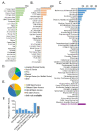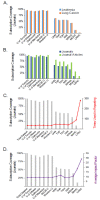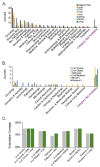Clinical reporting for personalized cancer genomics requires extensive access to subscription-only literature
- PMID: 37312803
- PMCID: PMC10259627
- DOI: 10.5195/jmla.2023.1572
Clinical reporting for personalized cancer genomics requires extensive access to subscription-only literature
Abstract
Objective: Medical care for cancer is increasingly directed by genomic laboratory testing for alterations in the tumor genome that are significant for diagnosis, prognosis and therapy. Uniquely in medicine, providers must search the biomedical literature for each patient to determine the clinical significance of these alterations. Access to published scientific literature is frequently subject to high fees, with access limited to institutional subscriptions. We sought to investigate the degree to which the scientific literature is accessible to clinical cancer genomics providers, and the potential role of university and hospital system libraries in information access for cancer care.
Methods: We identified 265 journals that were accessed during the interpretation and reporting of clinical test results from 1,842 cancer patients at the University Health Network (Toronto, Canada). We determined the degree of open access for this set of clinically important literature, and for any journals not available through open access we surveyed subscription access at seven academic hospital systems and at their affiliated universities.
Results: This study found that nearly half (116/265) of journals have open access mandates that make articles freely available within one year of release. For the remaining subscription access journals, universities provided a uniformly high level of access, but access available through hospital system collections varied widely.
Conclusion: This study highlights the importance of different modes of access to the use of the scientific literature in clinical practice and points to challenges that must be overcome as genomic medicine grows in scale and complexity.
Keywords: Cancer; genetics; health sciences library collections; oncology; open access; pathology; precision medicine; subscription access; university collections.
Copyright © 2023 Schnell D'Souza, Gregory Downs, Shawn Hendrikx, Rouhi Fazelzad, Gabriel Boldt, Karen Burns, Darlene Chapman, Declan Dawes, Antonia Giannarakos, Lori Anne Oja, Risa Schorr, Maureen Babb, Amada Hodgson, Jessica McEwan, Pamela Jacobs, Tracy Stockley, Tim Tripp, Ian King.
Figures



References
-
- Kisor D, Ehret M. The personalized medicine report: opportunity, challenges, and the future. Personalized Medicine Coalition [Internet]. Washington, DC: Personalized Medicine Coalition; 2020. [cited 13 Nov 2021]. https://www.personalizedmedicinecoalition.org/Userfiles/PMC-Corporate/fi....
MeSH terms
LinkOut - more resources
Full Text Sources
Medical
